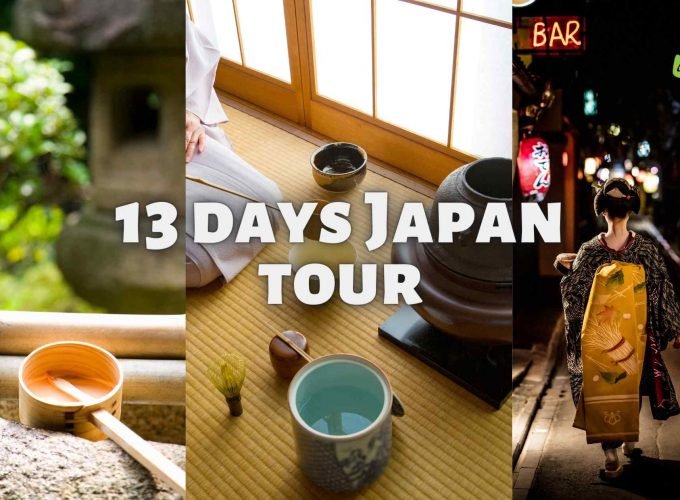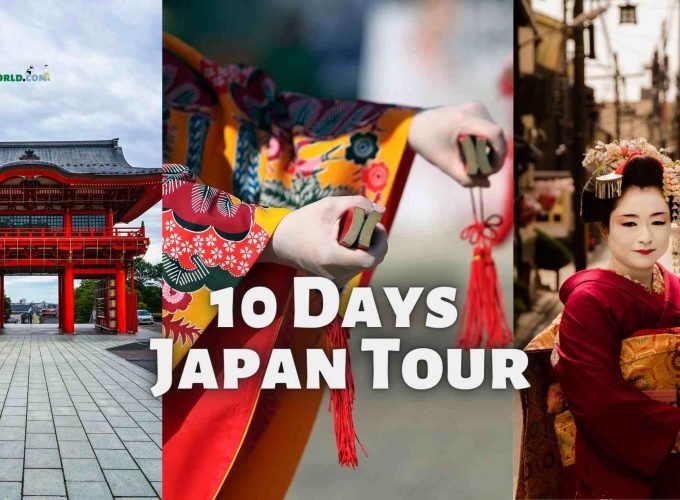About Kyoto Imperial Palace
About Kyoto Imperial Palace: Those who are interested in the history and culture of Japan should not pass up the opportunity to see the Kyoto Imperial Palace. This once-imperial palace, which can be seen in the middle of Kyoto, served as the official residence of Japan’s emperor for more than a thousand years. The grounds of the palace are now available to the public, providing visitors with a rare opportunity to get insight into the workings of Japan’s imperial court.
Visitors to the Kyoto Imperial Palace are required to pre-register and then participate in a guided tour, which can be conducted in a number of different languages. The palace is open for guided tours, during which visitors get the opportunity to see the restored buildings and grounds up close and to learn about the palace’s history and significance. Audio guides, which visitors can borrow to learn more about the palace’s history and architecture, are also available to visitors.
The Seiryo-den, also known as the state receiving hall, is one of the most impressive parts of the Kyoto Imperial Palace. This exquisite structure is a wonderful illustration of traditional Japanese architecture. It is embellished with delicate carvings and wall paintings that are equally as complex. The Shisui-den, which is the main hall of the palace and features traditional Japanese architecture together with gorgeous grounds, is also an absolute must-see.
The location of the Imperial Palace is another of its many appealing features. Because of its proximity to a number of other well-known tourist destinations in the city, including the Nijo Castle, the Kyoto National Museum, and the Shimogamo Shrine, it is an exceptionally convenient and well-liked place to visit while in Kyoto.
A trip to the Royal Palace in Kyoto is a one-of-a-kind and unforgettable experience that provides a fascinating look into the history and culture of Japan’s imperial period. The Kyoto Imperial Palace is a location that should not be missed by anyone, regardless of whether they have a passion for history or culture, or simply want to broaden their horizons and try something new.
The palace is accessible to the public every day of the year from 9:00 a.m. until 4:30 p.m., with the exception of national holidays. Because there is no charge for entering, it is a really good deal for tourists. Why hold off then? Make your plans to visit the Kyoto Imperial Palace as soon as possible in order to immerse yourself in Japan’s illustrious past and vibrant culture.
History of Kyoto Imperial Palace
The Kyoto Imperial Palace is a building in Kyoto, Japan, that was formerly used as the imperial palace. Since 794 A.D. until the late 19th century, when the capital was relocated to Tokyo, it served as the official palace of the Emperor of Japan. This lasted for nearly a thousand years. The first version of the palace was constructed in the year 794 AD, which was during the Heian period. The palace has been the subject of numerous modifications and reconstructions throughout the course of the ages.
During the Edo period (1603-1868), the palace in Japan served as the epicenter of the country’s political system. It was also at this time that the grounds of the palace were expanded to include a number of exquisite gardens. These gardens were constructed around the Shisui-den, which was the main hall of the palace, and the Seiryo-den, which was the state reception hall.
However, during World War II, a significant portion of the palace was destroyed, and after the war, only a select number of the buildings were repaired. Today, the grounds of the palace are open to the public, and visitors can take guided tours to see the buildings and gardens that have been restored, as well as learn about the history and significance of the palace.
Visitors continue to flock to see the Kyoto Royal Palace because it is such an iconic representation of Japan’s imperial past and culture, and it is also one of the city’s most well-known tourist attractions. The Kyoto Imperial Palace is a location that should not be missed by anyone, regardless of whether they have a passion for history or culture, or simply want to broaden their horizons and try something new.

How to reach Kyoto Imperial Palace
The Imperial Palace of Kyoto is conveniently placed in the middle of Kyoto, Japan, and can be reached by a variety of public transit options. The following is a list of the several routes to the palace:
- By Train: Kyoto Station is the train station that is located the closest to the Kyoto Imperial Palace. This station is served by a large number of both local and express trains. To reach the Imperial Palace from Kyoto Station, you can either take a taxi or board bus number 201, 206, or 208 and get off at the stop designated for the Palace.
- By Bus: The Imperial Palace is serviced by a variety of different city buses, including routes 201, 206, and 208, among others. Buses leave Kyoto Station and various other points throughout the city at frequent intervals.
- By Taxi: Taxi service is offered at Kyoto Station in addition to other areas of the city, and taxis are readily available. If you would like to go to the Kyoto Imperial Palace, all you need to do is tell the driver that you would like to go there, and they will transport you there.
- Renting a Bicycle: The Kyoto Imperial Palace may be easily reached by renting a bicycle, which is also a fun way to explore the rest of the city of Kyoto. You can rent a bicycle in the city from one of the many different rental shops for a day or for a longer period of time.
It is recommended that you plan your journey in advance to ensure a smooth and stress-free visit to the Kyoto Imperial Palace, regardless of the mode of transportation you choose to use in order to get there.
Do's and Dont's at Kyoto Imperial Palace
When visiting the Kyoto Imperial Palace, it is important to follow some basic do’s and don’ts to ensure a respectful and enjoyable visit. Here are some things to keep in mind:
Do’s:
- Dress appropriately: Visitors are expected to dress modestly and respectfully when visiting the palace grounds. This means avoiding clothing that is too revealing or casual, such as shorts or tank tops.
- Be respectful: The Kyoto Imperial Palace is an important cultural site, so visitors are expected to behave respectfully at all times. This means being quiet and avoiding loud or disruptive behavior.
- Follow the guided tour: Guided tours are available for visitors, and these tours provide an excellent opportunity to learn about the palace’s history and significance.
- Take photos: Visitors are allowed to take photos at the palace, so feel free to capture some memories of your visit.
Don’ts:
- Don’t touch anything: Visitors are not allowed to touch anything in the palace, including the buildings, gardens, and artifacts.
- Don’t litter: Keep the palace grounds clean by properly disposing of any trash.
- Don’t enter restricted areas: Some areas of the palace are off-limits to visitors, so be sure to follow the signs and stay within designated areas.
- Don’t smoke: Smoking is not allowed within the palace grounds.
By following these basic do’s and don’ts, you can ensure a respectful and enjoyable visit to the Kyoto Imperial Palace.
Highlights of Kyoto Imperial Palace
For anyone interested in the history and culture of Japan, a trip to the Kyoto Imperial Palace is an absolute necessity. The following is a list of the most noteworthy features of the palace that you won’t want to overlook:
- The Palace Buildings: The Buildings of the Palace The palace grounds are home to a number of stunning buildings, some of which were utilized by the imperial family for formal gatherings and ceremonies. These buildings include the Seiryo-den and the Shisui-den.
- The Gardens: The palace grounds are also home to several lovely gardens, one of which is the East Garden, which is a typical Japanese garden complete with a pond and a tea house. The East Garden is just one of the gardens that can be found on the grounds of the palace.
- History: The Kyoto Imperial Palace has a long and illustrious history that dates back to the 14th century, and a trip to the palace offers a one-of-a-kind opportunity to learn about the imperial legacy and culture of Japan.
- Architecture: The palace structures are excellent examples of Japan’s traditional architectural style. They have tiled roofs, wooden walls, and elaborate embellishments that reflect the cultural history of the country.
- The cultural significance: It lies in the fact that the Kyoto Imperial Palace is widely regarded as one of the most significant cultural monuments in Japan, and a trip to the palace offers an insight into the diverse cultural history of the country.
These are but few of the many attractions that may be found within the Kyoto Imperial Palace. It does not matter if you are interested in history or culture, or if you are just searching for a destination to see that is one of a kind and interesting, the Kyoto Imperial Palace is absolutely worthy of your time.






Comment (0)